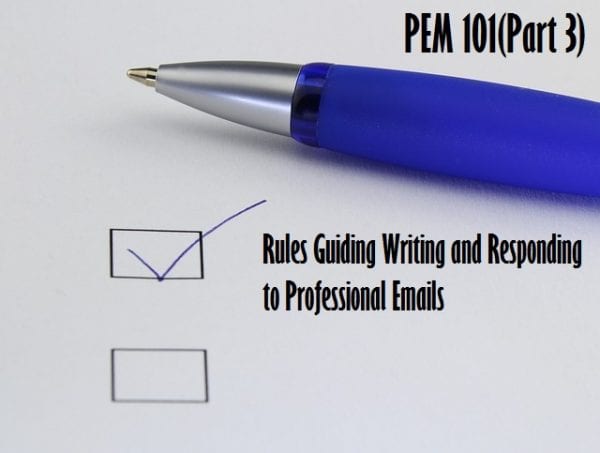Email introductions are an unavoidable necessity if you’re working in the professional space. We meet new people all the time and there’s often a repeated phrase that ensues,
“Hi, my name is Jim Blessed. Nice to meet you.”
This is the first stage of a normal in-person introduction. This is almost all that’s needed in email introductions as well. When doing in-person introductions, after the first stage of telling the recipient your name, you proceed to tell them how they can be of service to you or vice versa. In email introductions, this is also the next stage of the process.
There’s an unlimited way you can do email introductions. You can send emails introducing two people by email, you can send an email introduction to a client, to a potential employee, to a potential customer in your cold email list, you can send an email introducing a new staffer to the members of your team and you could also send email introductions introducing yourself. The cases are limitless, it all depends on the occasion and the purpose of the introduction.
In all email introductions, some rules are generally applicable to all scenarios. In this article, we’re going to discuss email introductions for different purposes and also some general ground rules for making email introductions.
General Rules for Email Introductions
Email introductions for different scenarios often have some underlying ground rules. We’re going to be discussing some of those in this article.
Respect People’s Privacy. The first and most important rule of email introductions is that your introductions do not violate people’s privacy (unless for cold email campaigns) the recipient of your email should be expectant, especially if you’re emailing people from your organization.
Three Segment Rule. Email introductions generally have 3 segments.
- The first segment is the introduction. This is the main reason for the email. You introduce yourself to the person, depending on the objective.
- The second segment is the reason for the introduction. Why are you introducing yourself? Why are you introducing the other party? How are they going to be beneficial to each other? These are questions that should be answered before the introduction is made. If you can’t find candid answers to the questions above, then you may want to reconsider the introduction.
- The third stage is where you thank the recipient for their time and accept to answer any questions or clear any uncertainties.
Note, these rules are subject to changes and are not set in stone. If your email demands different or alternate methods, then feel free to apply them.
Bcc: Yourself. If you’re sending an email introducing two people or teams, it’s important that you Bcc: (Blind carbon copy) yourself on the email introduction. The main reason for this is to have a record of the introduction and to easily reference it if the need arises.
The rest of the rules for sending email introductions are going to be discussed throughout this article in different subheadings.

Quick Email Introductions
When sending an email to introduce yourself, your email must be professional, must state the purpose of your email and must engage the reader.
Below are tips and samples and how to write the most effective self-introduction emails.
How to Introduce Yourself in an Email
In this part of the article, we’re going to discuss ways to introduce yourself in an email.
The Subject Line. The subject line is unarguably one of the most important parts of an email. Whether or not your email is going to be opened or trashed depends almost entirely on your subject line. This is why you need to make sure your subject line is properly written and translates the purpose of your email. Your subject line should be concise, straight to the point and should generally tell the recipient what the email is all about.
Address the email properly. If you’re introducing yourself to someone especially if they’re not familiar with you, it’s best to find the person’s email address instead of a generic email address like [email protected]. Emailing a contact via their direct email increase your chances of getting a response.
Additionally, if you’re emailing a contact in a company, it would greatly help your case if you had a connection or a referral in the company. If you have a contact in the company, make sure to include it in the first paragraph. This way the recipient sees it immediately after they read your email.
Be specific with your request. Your email should state who you are and the reason you’re emailing. The recipient shouldn’t have to waste time trying to decipher the reason for your email. The reason you’re emailing them should be stated as clearly as possible in your email.
Be courteous with your demands. If you’re emailing the contact with a request, make sure the request is properly stated and not hoisted upon the recipient like a command. For example, “I would appreciate some feedback if you have the time.” Is generally more acceptable compared to “Get back to me with some feedback.” A polite request will spur the recipient to do your bidding more than an outright command will.
Sample on How to Introduce Yourself via Email
Subject: Introduction from Jim Blessed (Woculus) Dear Jacob Wayne, My name is Jim Blessed from Woculus, and I’m writing to ask for your assistance in launching a product on your website. I’d appreciate the help and assistance. Kind regards, Jim Blessed.
Sample on How to Introduce Yourself in an Email
Introducing yourself with a referral example. Dear Jacob Wayne, I am a friend of Ayoade Oyedotun who encouraged me to send my proposal to your company. Ayoade and I have worked on multiple projects together and he thought my proposal might be of interest to you. Please get back to me when you have the time to discuss this more extensively. Kind regards, Jim Blessed
Introducing a New Team Member
Introducing new team members is part of the general onboarding experience. As remote working continues to increase, introductions are now done more via email than in-person where all that was required for the introduction is for the manager and the new hire to stand and exchange a few words with the rest of the team.
For emails introducing new employees, it should be short, containing their name, job title, role in the company and a bit of their background-although that last part is optional. Email introductions are important as it keeps the new hire and the employee in the know about each other.
Email Sample One Introducing a New Team Member
Subject: Welcoming Jane to Woculus/Marketing Hi Everyone, I’m excited to announce that Jane will be joining us as a Marketing Associate. Jane will work loosely with the Marketing team to help grow improve sales and manage paid ads. Please say hi to her and officially welcome her to the team! I expect everyone to do this, especially members of the marketing team. Best regards, Jim Blessed.
Email Sample Two Introducing a New Team Member
Hi Team, I’m happy to announce that Mary is joining our team today as a Digital Marketing Associate to work on the Zell project. Mary has a background in executing successful marketing campaigns for companies like Zell and we feel her input is going to be an invaluable addition to the project. If you see Mary, please say hi to her to ease her onboarding. If you have any questions, do not hesitate to reach out to me. Best Regards, Jim Blessed.
Introducing Yourself to a Potential Employer
Outside the traditional methods of gaining employment where a candidate applies and is called in for an interview. There are methods that can be employed to gain employment by introducing yourself to potential employers.
Among these methods, most of them revolve around sending cold emails or cold messages to potential employers. Before writing to introduce yourself to potential employers, you need to make sure your skills would be useful to them, if not, your attempt may be in vain.
Here are some samples to introduce yourself to potential employers.
Sample One Introducing Yourself to Potential Employers
Subject: Content Writer Application Dear Jeffery Sims, My name is Jim Blessed, and I admire your company and the kind of content you put out on your blog and Medium. I'm reaching out to you today because I saw your contact email listed as the go-to person for the Content Writer position. I have attached a copy of my resume and cover letter to this email. I look forward to hearing from you. Kind regards, Jim Blessed
Sample Two Introducing Yourself to Potential Employers
Subject: Graphics Designer Position Dear Simon Opeyemi, My name is Victor Angel, and I’m writing this email to inquire about any open graphics designer position in your company. I’ve been following your company for a while and I am greatly inspired by your designs and general work ethics. I believe my skills would be of great use to you if given the opportunity. A copy of my CV and a link to my portfolio has been attached. Kind regards, Victor Angel
Conclusion
Writing email introductions often follows the rule of a normal in-person introduction. The rules and guidelines to make your email introductions as smooth as possible have been listed in this article, along with samples to provide pointers on how to write your email introductions.






